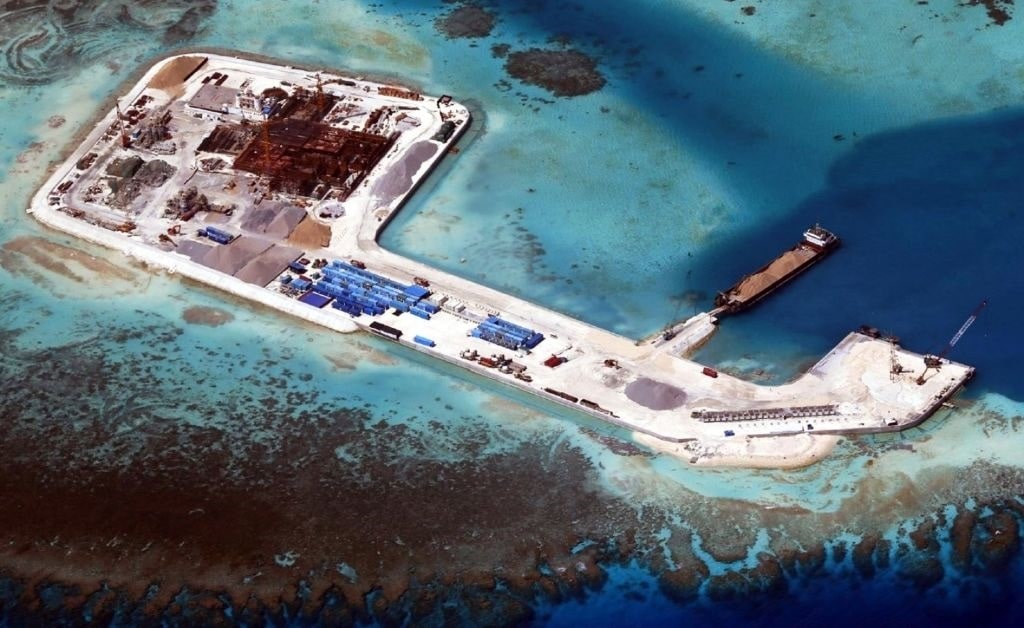Beijing plays a dangerous naval game.
China is at it again in the South China Sea. This time, the People’s Liberation Army Navy (PLAN) and air forces sent warships and aircraft to bully a US Navy destroyer, preventing it from exercising its freedom of the sea rights to sail in international waters. The Chinese Communist Party (CCP) has for years claimed international waters around the Paracel Islands group, roughly 220 miles southeast of the Chinese island of Hainan and 250 miles due east of Vietnam.
China Threatens US Navy and Allies in the South China Sea
Beijing has become more aggressive in asserting its unsubstantiated sovereignty over increasingly larger areas of the South China Sea, attempting to deny legitimate transit in contested waters. Vietnam and Taiwan also claim sovereignty over the Paracel Islands, not recognizing Chinese ownership of significant swaths of international waters there. Sui-Lee Wee reported in The New York Times:
“China claims 90 percent of the South China Sea, some of it thousands of miles from the mainland and in waters surrounding Vietnam, Malaysia, Brunei, Indonesia and the Philippines. In the past decade or so, China has asserted ever greater control over these waters, using two island chains called the Paracels and the Spratlys to expand its military footprint by building and fortifying outposts and airstrips.”

Spratly Islands (Photo by: Pictures from History/Universal Images Group via Getty Images)
The Spratlys comprise more than 100 shoals, coral reefs, and small islands and are the center of dispute among the Philippines, China, and Vietnam. According to a ruling in 2016, China has no lawful claim to the challenged areas of the international waterway. “Five years ago on this day, an international tribunal in a landmark ruling dismissed Beijing’s claim to much of the South China Sea. The Permanent Court of Arbitration at The Hague said on 12 July 2016 that there was no evidence that China had exercised exclusive control historically over the key waterway,” Pratik Jakhar recalled in a Lowy Institute publication, The Interpreter.
The dilemma for the United States is that as the PLAN grows in numbers and capability, its threatening naval and air operations become more hazardous during America’s Freedom of Navigation Operations (FONOP). “In the latest sign of escalating tensions in the disputed South China Sea, China claims it launched its navy and air force to ‘warn away’ a US warship out of the area it claims — while the US Navy says the destroyer Hopper passed through the area on a legal operation,” Sara Dorn reported for Forbes. The US Commander, US 7th Fleet in the Pacific, put out a press release on China’s assertion it warned “away” an American naval vessel, explaining:
“On November 25, USS Hopper (DDG 70) asserted navigational rights and freedoms in the South China Sea near the Paracel Islands, consistent with international law. At the conclusion of the operation, USS Hopper (DDG 70) exited the excessive claim area and continued operations in the South China Sea. This freedom of navigation operation upheld the rights, freedoms, and lawful uses of the sea recognized in international law …”
If the People’s Republic of China (PRC) is confused regarding the US intentions in the South China Sea, an earlier statement by the US Navy during a similar FONOP by the USS Benfold in January 2022 explained: “The United States is defending every nation’s right to fly, sail, and operate wherever international law allows, as USS Benfold did this week. Nothing PRC says otherwise will deter us.” However, confronting the PRC in the Indo-Pacific comes at a cost.
US Navy Operations on a Global Scale Stress Capacity
The US Navy is stretched thin. According to the US Naval Institute News Fleet and Marine Tracker, of the 11 US Navy aircraft carriers with accompanying warships, five are at sea. Two carrier strike groups, the USS Gerald R. Ford and the USS Dwight D. Eisenhower, are supporting operations in the eastern Mediterranean and Arabian Sea, and two are in the northwestern Pacific: the USS Ronald Reagan and the USS Carl Vinson.
The Israel-Hamas war, Iranian-backed terrorist organizations, and Yemeni Houthi terrorists have tied up two complete carrier strike groups. China represents a threat that would require a considerable naval force to counter. Though the PLAN has more ships than the United States, they are not as capable ship-for-ship as those of the American Navy. Yet, as Liberty Nation has reported, Beijing’s shipbuilding capability is 200 times stronger. It won’t be long before the PLAN will eclipse the US Navy in overwhelming numbers.
The United States and its allies present a stronghold against Chinese aggression, and recent combined exercises in the Indo-Pacific demonstrate the successful integration of combat tactics and equipment. Consequently, the PRC, by harassing the US Navy, is taking on just one part of a formidable international force in the region.
The views expressed are those of the author and not of any other affiliation.

